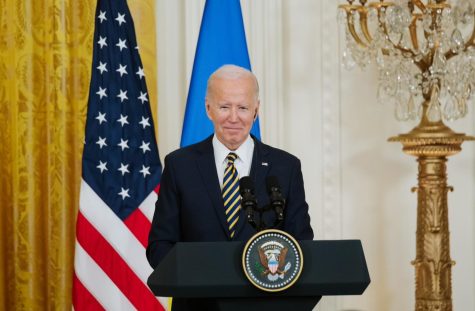Chaos in Kabul as U.S. Finishes Evacuation
September 6, 2021
As the last evacuation flights take off from the Kabul airport, effectively ending America’s longest war, questions remain as to how 20 years of American presence in Afghanistan unraveled in less than two weeks. Despite imminent and credible terrorist threats, tens of thousands of civilians crowded the few remaining open entry points, including hundreds of American citizens and Afghan nationals who helped American forces throughout the war.
Many traveled hours or even days to reach the last foothold of Western power in the country, despite a suicide bombing on Thursday that killed at least 200 civilians, as well as 13 U.S. service members, one of the deadliest attacks in the recent history of the conflict. ISIS-K, an Afghan affiliate of the Islamic State, claimed responsibility for the attack. ISIS-K was founded by former members of the Taliban who believed the group was not militant enough and claims to be enemies of both the new Taliban government in Afghanistan and the West. President Joe Biden, in a statement, said that “We will hunt you down and make you pay.”
Even before Thursday’s attack, the U.S. evacuation effort was defined by a sense of chaos and uncertainty, all centered around President Biden’s promise that all ground forces would be out of Afghanistan by August 31. The date was set last year when then-President Trump signed an agreement with the Taliban that all Americans would leave, but that the Taliban would allow the U.S.-backed Afghan government to stay. As troops pulled out of the country the Taliban was quick to fill the vacuum, capturing provinces and bases sometimes without firing a shot.
The capital city of Kabul fell in just under a month, with President Ashraf Ghani fleeing the Presidential Palace before Taliban fighters stormed the building and began taking pictures in his former office. In a Facebook post, Ghani said “I thought it was best to get out” to avoid further bloodshed in the city.
The Taliban quickly took up the role of patrolling their new capital, setting up checkpoints around the airport to control the flow of people and stop the inevitable brain drain of skilled workers seeking to flee the country. In one of their stronger moves of the conquest, Taliban fighters pulled an Islamic State leader out of a Kabul prison, where he had been held by the former Afghan government and executed him on the spot.
Concerns surrounding what a Taliban government will look like, especially in terms of women’s rights and the fate of those who worked with American forces, have added more stress to already frantic evacuation efforts. The Taliban said that it would respect all workers who had been in Afghanistan for the past 20 years and not seek retribution against those who supported America’s war in the country. However, senior leadership also warned that their fighters were “not trained to respect” women, and so any female Afghani should stay inside.
As of this past weekend the United States and its allies have evacuated more than 100,000 civilians from the region, with those lucky enough to get on a flight ending up everywhere from Dulles Airport in Washington D.C. to surrounding countries, such as Qatar and Uzbekistan. With the 20th anniversary of the 9/11 attacks fewer than two weeks away, the sight of the Taliban flag flying once again over the streets of Kabul adds a final sour note to the already ugly ending of America’s longest war.












